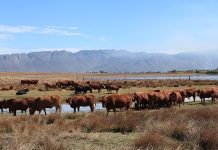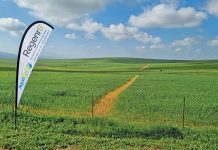Researchers at the University of Pretoria’s Tree Protection Co-operative Programme (TPCP) have put out an urgent call to the commercial forestry sector for large numbers of specimens of the bronze bug (Thaumastocoris peregrinus), an invasive eucalyptus tree pest. These specimens will be used to develop biological control agents for the pest.
Originally from Australia, the bronze bug was first noticed in South Africa in 2003 and is now recognised as one of the most serious threats to eucalyptus forestry in the country.
The TPCP described the bronze bug as a sap-sucker that can gather in such large numbers that its feeding activities result in massive defoliation of eucalyptus plantations. This can cost South Africa’s commercial forestry industry millions of rands in revenue every year.
“The speed with which [the bronze bug] has spread throughout the country has shocked many,” said a TPCP paper on the pest. “The bronze bug occurs in all eucalyptus growing areas from Tzaneen in the north to Cape Town in the south.
“The main species or hybrids being attacked are Eucalyptus camaldulensis, E. grandis X camaldulensis and E. grandis X urophylla. However, E. grandis, E. tereticornis and E. smithii have also been severely infested in some areas.”
The TPCP said there are no easily available controls anywhere in the world for the bronze bug, as there is a dearth of tested and registered chemical pesticides against this pest.
The bronze bug also tends to congregate in the mid-canopy of mature eucalyptus plantations. This makes it difficult and potentially environmentally hazardous to apply toxic chemical controls.
The TPCP believes that the only feasible solution to bronze bug infestations in South Africa lies in biological control. TPCP researchers are confident that a suitable and effective biological control agent against the bronze bug can be found. However, this will require commercial eucalyptus farmers’ help.
“Bronze bug specimens are needed to ensure the successful rearing of a potential biological control agent for the bronze bug that we are currently studying in our quarantine facility,” explained Dr Brett Hurley, an entomologist with the TPCP. Bronze bug adults are only 2mm to 4mm long and very active, making it difficult to spot them during low-level infestations.
Craig Norris, forestry technology services department manager for NCT Forestry, a forestry production and timber products marketing co-operative, said, “It’s difficult to determine the economic impact of the bronze bug. If a chemical was to be registered, it would have to be applied aerially which would pose an environmental threat. It is therefore important to release an effective bio-control agent.” – Lloyd Phillips
Should you know where the TPCP can collect samples of the bronze bug, please contact Dr Brett Hurley on 012 420 5822 Cell or 082 909 3211 or email [email protected].
Caption:
Bronze bugs on a eucalyptus stem. The TPCP needs specimens from farmers so that it can develop a biological control method.
COURTESY OF DR BRETT HURLEY OF TPCP








